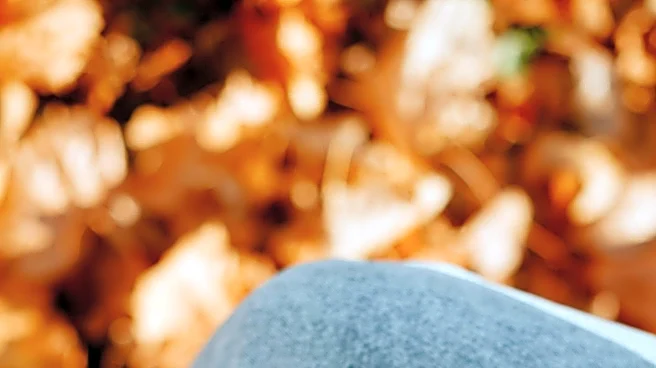What's Happening?
As autumn arrives, many individuals begin to experience symptoms of Seasonal Affective Disorder (SAD), a condition linked to reduced exposure to natural light. Dr. Luis Herrera, medical director of Schwabe Farma Ibérica, explains that the change in season
affects the circadian rhythm, which can lead to sleep disorders, fatigue, and irritability. These symptoms increase vulnerability to anxiety. To counteract these effects, experts suggest adopting mini habits such as drinking water first thing in the morning, breathing fresh air, and focusing on positive thoughts. Drinking water helps stabilize cortisol levels and maintain hydration, while fresh air and sunlight exposure can alleviate SAD symptoms through phototherapy. Clinical psychologist Anthony Townsend notes that phototherapy involves exposure to bright light for two hours upon waking, which can improve mood within days.
Why It's Important?
The onset of SAD can significantly impact mental health, particularly as daylight decreases in the fall. This condition affects approximately 1 in 20 people, with women being twice as likely to experience it. By adopting simple habits, individuals can mitigate the effects of SAD, improving their overall well-being and productivity. These practices not only help regulate mood but also enhance energy levels, which are crucial for maintaining daily activities and social interactions. The emphasis on natural remedies like hydration and sunlight exposure offers accessible solutions for those affected, potentially reducing reliance on medication and promoting healthier lifestyle choices.
What's Next?
As awareness of SAD grows, more individuals may seek out these mini habits to improve their mental health during the fall and winter months. Health professionals might increasingly recommend these practices as part of a holistic approach to managing SAD. Additionally, workplaces and educational institutions could implement strategies to support individuals during this period, such as flexible schedules or increased access to natural light. The focus on preventive measures may lead to broader discussions on mental health and seasonal changes, encouraging proactive management of mood disorders.
Beyond the Headlines
The discussion around SAD and mini habits highlights the importance of mental health awareness and the need for accessible solutions. It underscores the role of environmental factors in mental health and the potential for lifestyle changes to offer relief. This approach may inspire further research into non-pharmacological treatments for mood disorders, promoting a shift towards preventive care. The cultural acceptance of discussing mental health openly could lead to more supportive communities and workplaces, fostering environments where individuals feel empowered to seek help and implement positive changes.















